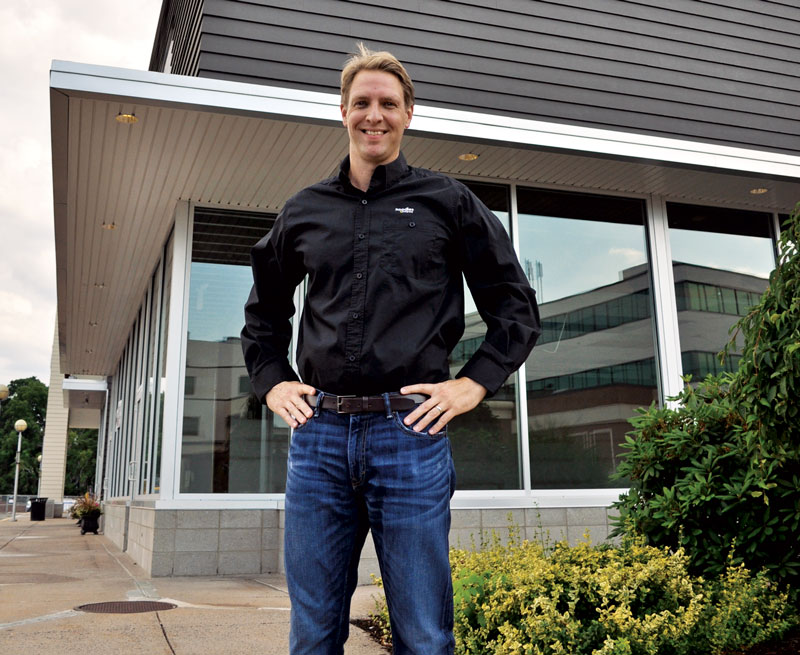Robert Barton isn’t afraid to let a new product stand in the way of his success. The Connecticut-based franchisee was one of the first to the better-burger category, having opened four Five Guys units between 2005 and 2010. When he and his business partner sold in 2010, they had three of the top 15 Five Guys units.
Barton had seen other better-burger concepts popping up in his surrounding area, and, ready for a fresh start, left the category. He joined the Noodles & Company team and decided to set up shop in Hartford, a new market for that brand.
With his first unit set to open this fall, Barton discusses how franchisees can handle a transition from one brand to another and be the new guy in a new market.
1. Evaluate both the market and the brand
The better-burger field was getting very competitive when we sold in 2010, and it’s still growing. Last year, when I found the location for the Noodles & Company unit, there were no fast-casual burger places in Hartford; now there are three, and Five Guys isn’t even one of them. It was the right time to change directions and go with something different.
I wanted to find another brand that was breaking new ground, and that’s what franchisees should look for first. There is nothing like Noodles & Company in my surrounding market, and it’s an opportunity to be the first one to the market before similar competition rolls into town. This can also help you in the long run when stores selling parallel product come into the picture, because you have the longevity and your loyalists will stick around.
A lot of your success, though, will come from making sure you pick the right brand for that market. I knew that I wanted to switch brands but couldn’t decide on what to switch to. More news was popping up about Noodles & Company, and the growth trajectory for the brand kept rising. Just having a different product in the area won’t always win over the customer base. Concentrate on the market characteristics for the new brand in relation to the market you’re going into. What’s the cost of goods? Can your past experience help with this new product?
2. Remember, it’s all about location
The reason why there was so much success with Five Guys was because of the location. When it comes to fast casual, location really needs to be at the top of your list of priorities. You’re better off finding a good location than a similar product if you’re switching brands. Don’t fall into a good deal inside a little strip mall or a random spot. Listen to your market and real estate advisers.
Putting the Noodles & Company in West Hartford, Connecticut, was important because people from three or four towns over are coming into that area, whereas most people in West Hartford aren’t really leaving the area short term. If you’re the new brand in town, make sure people know about you. This will help long term as well, because once you start to open up store number two or three, customers who have traveled to the area before but live in another town will recognize you.
Vital to your success is running really good and sound operations. Make sure you’re hitting on all cylinders and not just focusing on one aspect to get your brand off the ground. Know the new systems inside and out and don’t just try to do one thing really well. Whatever made you successful before should translate into your new business and brand.
3. Commit to your local community
Don’t fall back on your previous successes too much. You might not have had to be involved in the community as much in the past, but now that you’re the new brand in a new market, you can’t afford not to involve yourself. Use other local businesses for your business, such as banks or payroll offices. Customers see your commitment to the area and will want to do the same. It’s not always possible, but try to use people or companies you’re familiar with that will ease the transition.
Food drops for local charities or businesses and fundraising opportunities will create a loyal customer base right from the start. A lot of these breaks can get lost if you’re too focused on one specific thing. Don’t get held up on the lease or the architecture of your unit; some things are just beyond your control.
Rarely will you open in your normal sales projection, but stay on it; the longer you take to get the brand off the ground, the quicker someone else might set up shop right next to you. Time is really the biggest challenge, but if you’re creating the community buzz around you, it will help ensure your continual growth.
4. Establish achievable goals
Set up significant revenue goals for yourself and the brand. Keep it in the big picture. You have the opportunity to be the next big fast casual, but it’s going to be a start-up business just like any other. Be prepared for the fact that every brand is different. There is a ton of new information that you need to absorb.
Look at trends of market sales within your brand. If possible, go with a brand that has a lot of its own company-run units. Noodles & Company has more than 200 of its own stores that it operates. This allows prospective franchisees to look into challenges that it has had breaking into new markets. You also get untethered access to the system of information for the brand, and this allows you to get a real feel for what the plan was for each unit. This is good to match up to your plan to see if your goals are achievable and applicable to your new market. q






